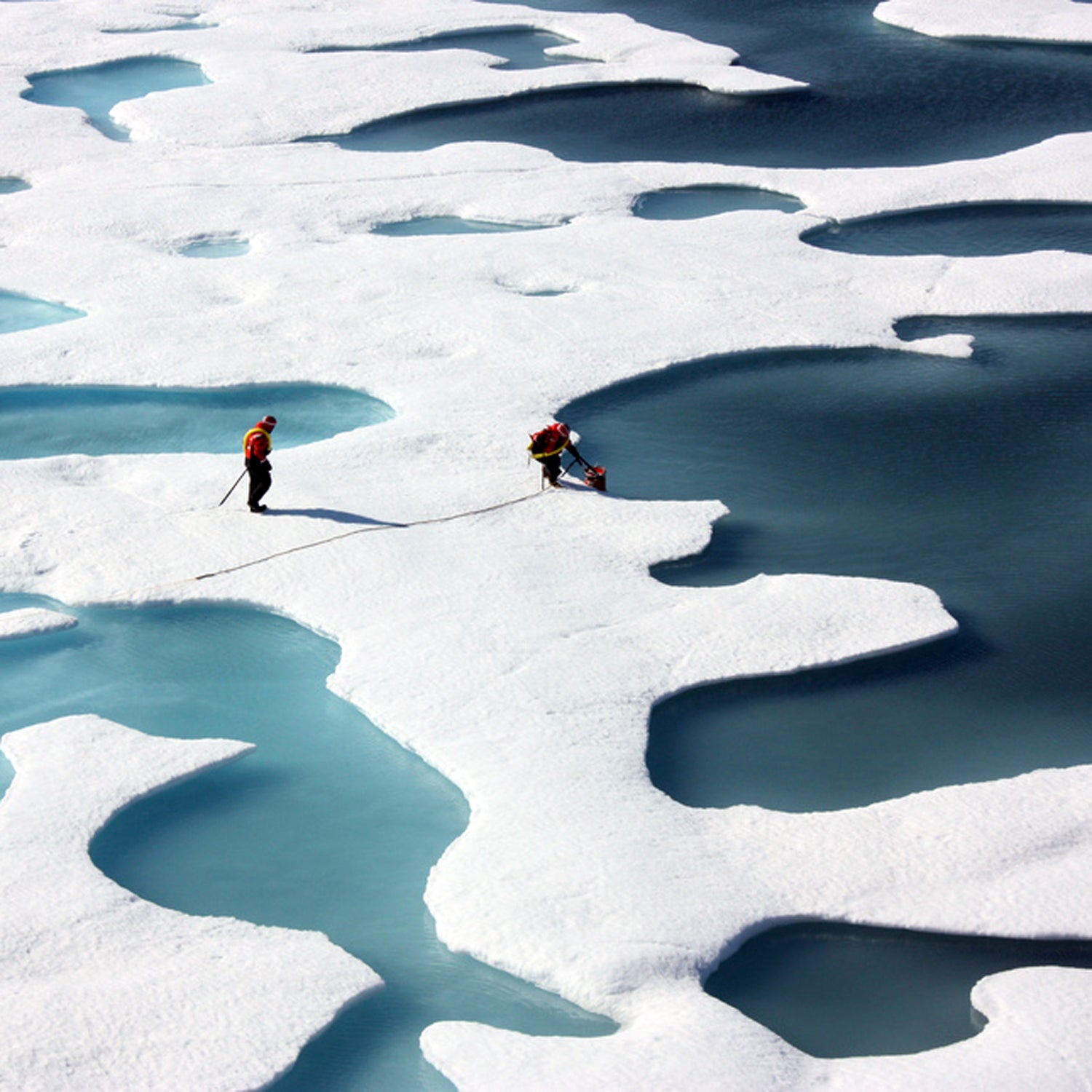For roughly the last 2.6 million years, winter has won out in the Arctic. The region’s short summers simply weren’t up to the task of melting ice produced during the cold months, a phenomenon that allowed glaciers to flourish, erected climactic barriers keeping out southerly species, and kept barometric pressure high, warding off storms and keeping the region in a sort of clear-sky stasis.
All that changed in 2007, says veteran Canadian journalist Edward Struzik in his new book . That was the year, many scientists agree, when the Arctic’s summer melt started to overtake its winter deep freeze, a tipping point that’s since had dramatic consequences for terrestrial and marine wildlife, meteorology, the people who call the Arctic home, and those who want to access the bonanza of oil and natural gas protected beneath the permafrost.
But somehow, this isn’t the most provocative point that Struzik makes in Future Arctic. What really ropes you in is his scene-setting, an opening chapter looking back beyond those 2.6 million years, conjuring a time when the Arctic was a lush, tropical landscape filed with “alligators, giant tortoises, snakes, lizards, tapirs, hippos, and rhino-like animals… in a climate that was similar to what is experienced today in Georgia and the Florida Everglades.” Look, says Struzik, climate change happens. On the scale of geologic time, it happens pretty frequently—and for every few species that lose because of it, another handful stand to gain.
There are “woah” moments every few pages, as the book lays out details of Arctic ecotastrophes that have flown under the radar.
That’s the pull-no-punches launch pad from which Struzik blasts off on a detailed, impeccably reported exploration of how man-made climate change is already reshaping the Arctic. Future Arctic is refreshing in part because it’s not just a litany of glum figures and heartstring-tugging anecdotes, arranged to stir up maximum alarm. Those glum figures are in there, of course, and they seem unassailable, deriving from Struzik’s countless visits to the Arctic alongside world-class biologists, energy industry geologists, and “rugged, bean-eating rock doctors who think nothing of going a month without a shower.”
But Struzik’s deft rendering and the conclusions he draws make Future Arctic a steal at a bargain-basement ebook price of $3.03 (at which Amazon started offering it this week). Rarely does a book on climate change adopt the view that our task is one of adaptation rather than avoidance—at least not without seeming fatalistic and alienating. Whether Struzik describes the tough political task of relocating communities to avoid storm surges, heralds new migrations of (sometimes threatened) species now beginning to populate the Arctic, or urges caution and oversight with regards to the resource exploration that’s hot on the heels of the receding tundra, he does so in the voice of an informed pragmatist.
This description, I realize, makes the book sound dull. It ain’t. Struzik sets up most chapters with well-spun yarns from his journeys (of wildlife encounters, end-of-the-earth islands, close calls in bush aviation), and there are “woah” moments every few pages, as the book lays out details of Arctic ecotastrophes that have flown under the radar (like the 1970 natural gas blowout on King Christian Island, during which a nearly 300-foot column of uncontrolled flame burned the equivalent of 2.5 million gallons of gas every day for four months).
The Arctic’s future isn’t bright, says Struzik, but it is adaptable, if we’re smart. In any case, it is inevitable, and Future Arctic is a must-read for lovers of the far north and climate change realists.


